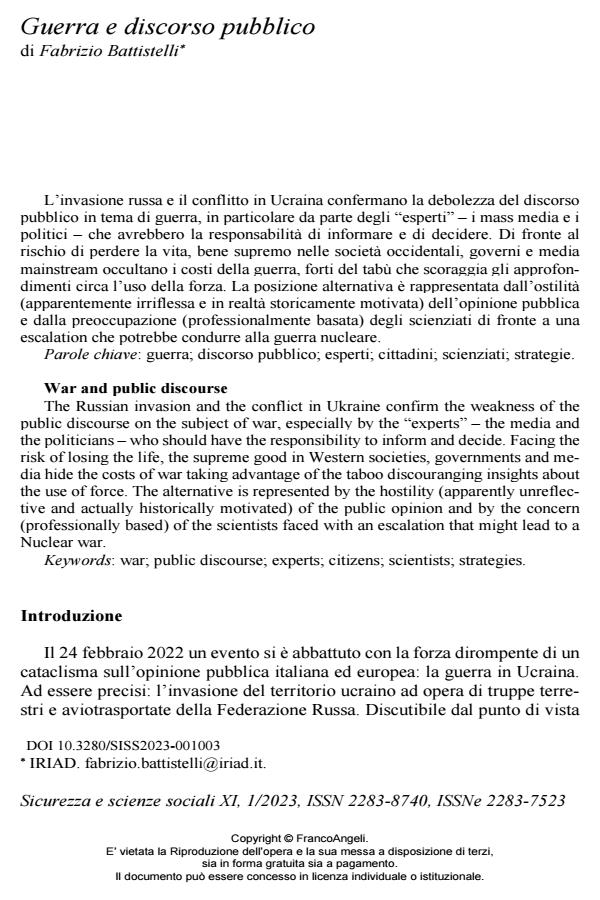War and public discourse
Journal title SICUREZZA E SCIENZE SOCIALI
Author/s Fabrizio Battistelli
Publishing Year 2023 Issue 2023/1
Language Italian Pages 13 P. 15-27 File size 175 KB
DOI 10.3280/SISS2023-001003
DOI is like a bar code for intellectual property: to have more infomation
click here
Below, you can see the article first page
If you want to buy this article in PDF format, you can do it, following the instructions to buy download credits

FrancoAngeli is member of Publishers International Linking Association, Inc (PILA), a not-for-profit association which run the CrossRef service enabling links to and from online scholarly content.
The Russian invasion and the conflict in Ukraine confirm the weakness of the public discourse on the subject of war, especially by the "experts" - the media and the politicians - who should have the responsibility to inform and decide. Facing the risk of losing the life, the supreme good in Western societies, governments and media hide the costs of war taking advantage of the taboo discouranging insights about the use of force. The alternative is represented by the hostility (apparently unreflective and actually historically motivated) of the public opinion and by the concern (professionally based) of the scientists faced with an escalation that might lead to a Nuclear war.
Keywords: war; public discourse; experts; citizens; scientists; strategies.
Fabrizio Battistelli, Guerra e discorso pubblico in "SICUREZZA E SCIENZE SOCIALI" 1/2023, pp 15-27, DOI: 10.3280/SISS2023-001003